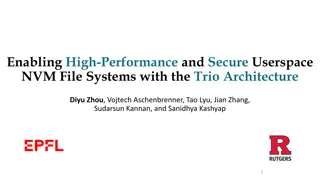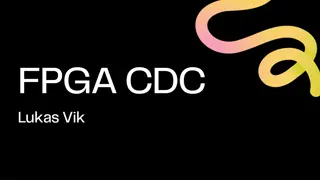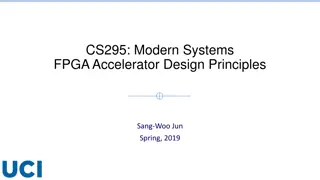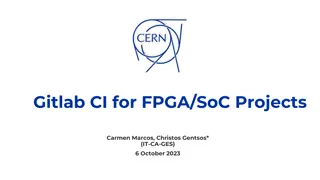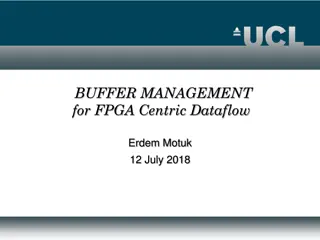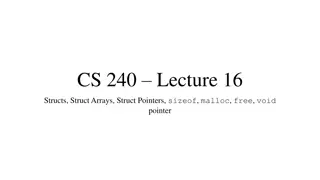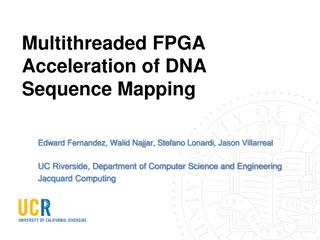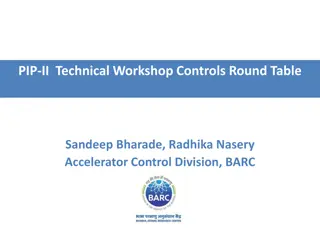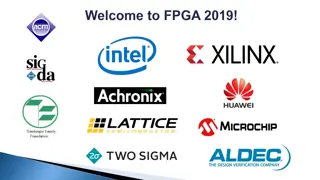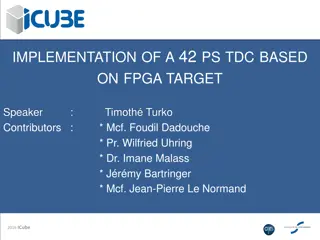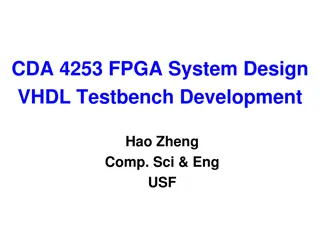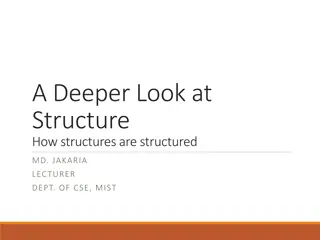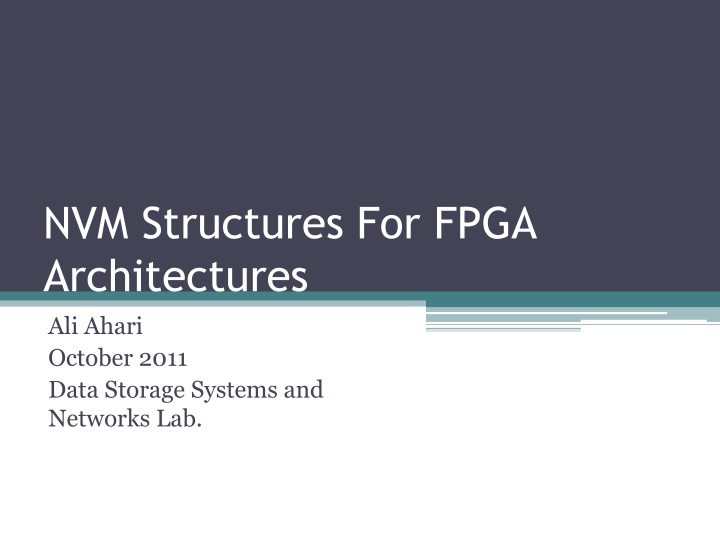
Non-Volatile Memory Structures for FPGA Architectures Review
"Explore non-volatile memory structures for FPGA architectures in this review session covering classification by memory type, challenges for Flash-based FPGAs, benefits, and combining SRAM with Flash for enhanced performance."
Uploaded on | 1 Views
Download Presentation

Please find below an Image/Link to download the presentation.
The content on the website is provided AS IS for your information and personal use only. It may not be sold, licensed, or shared on other websites without obtaining consent from the author. If you encounter any issues during the download, it is possible that the publisher has removed the file from their server.
You are allowed to download the files provided on this website for personal or commercial use, subject to the condition that they are used lawfully. All files are the property of their respective owners.
The content on the website is provided AS IS for your information and personal use only. It may not be sold, licensed, or shared on other websites without obtaining consent from the author.
E N D
Presentation Transcript
NVM Structures For FPGA Architectures Ali Ahari October 2011 Data Storage Systems and Networks Lab.
Outline Introduction New Non-Volatile Memory Structures for FPGA Architectures 3D-NonFAR RTA3P Conclusion
Introduction We are going to review 3 papers in this session Our goal is to make a review on previous works in Reconfigurable Architectures that use NVM in their structure
New Non-Volatile Memory Structures for FPGA Architectures1 Classifying FPGAs by the Memory used SRAM Flash Antifuse 1-TVLSI 2008
SRAM vs. Flash vs. Antifuse SRAM Flash Antifuse Cell Size Antifuse SRAM Flash Speed Antifuse Once in whole life Flash SRAM Stays even after power off At power up, from external source to chip Configuration
Challenges for Flash-based FPGAs High programming voltage and current 10V vs. 3V 200-500 A vs. 1 A Higher mask count Lower performance
Benefits Lower Cell size Great speed up at Power-up Saves the data even after power-down Introduces new power saving techniques
Programmable Elements(PEs) Example of two logical elements connected together using a switch that is controlled by PE. FPGA Logical element with three- input LUT, flip-flop (DFF), and two-input multiplexer.
Can we combine SRAM with Flash? Yes! By using polysilicon-oxide-nitride-oxide-silicon (SONOS) technology So now we have both speed of SRAM ability to store data in the absence of power Lower cell size
Proposed non-volatile PE for routing switches
Three-input LUT with integrated non- volatile memory PEs
Conclusion New structure shows 22% to 36% area savings Enables new power-down strategies
3D-NonFAR1 Main ideas: Using 3D integration Tech. High performance Reduced interconnect resources High logical density Using PCM High performance Excellent scalability High density 1-ISLPED '10 Proceedings of the 16th ACM/IEEE international symposium on Low power electronics and design
3D ICs Advantages: Higher packing density and smaller footprint Shorter global interconnect Flexibility of vertical routing Higher performance Low power Support of heterogenous integration Drawbacks: New thermal and power problems
Renovated FPGA basic structures with PCM MLC cells
Benefit and Cost Cost 10x-40x write latency Benefit 10x logical density
3D Architecture All non-volatile memory elements are aggregated in one single layer to reduce manufacture cost
3D NonFAR vs. Other 3D Architectures 3D-NonFAR is more favorable in larger devices
Performance and Power evaluation This evaluation is done by CACTI and PCRAM- sim
Power Consumption P = Pdyn + Pstatic Power Plogic,dyn Improvement Pmem,dyn Pnet,dyn Pclk,dyn Pstatic
Paper Conclusion In average: 54.9% improvement in total wire length 44.9% improvement in critical path delay 60% area reduction 35.1% power reduction
New Reprogrammable and Non-Volatile Radiation Tolerant FPGA: RTA3P1 It is a bunch of physical fault injection tests on A3P FPGA-family There is nothing about architecture and Showed some SEE sensitivity 1- AERO 2008 IEEE
Conclusion 1st paper Lack of measurement methods Some issues about performance of using NVM FFs 2nd paper A good heterogeneous architecture No point about manufacturing problems Good details about measurements 3rd paper Not related to the topic


